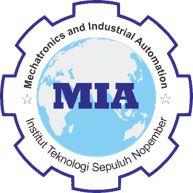Corrosion Monitoring System On Concrete Using Concrete Resistivity Test Based On The Internet Of Things
Abstract
Keywords
Full Text:
PDFReferences
I. Tanjung, A. Affandi, S. Huzni, and S. Fonna, “Investigasi pengaruh jumlah elemen anoda terhadap distribusi potensial korosi pada beton bertulang menggunakan BEM 3D,” Jurnal Rekayasa Material, Manufaktur dan Energi, vol. 3, no. 1, pp. 57–64, Mar. 2020, doi: 10.30596/rmme.v3i1.4529.
K. Kevin, G. C. Linggadiharja, D. Tjandra, and G. B. Wijaya, “Pengaruh Mutu Beton Terhadap Efektivitas Impressed Current Cathodic Protection Dengan Carbon Fiber Reinforced Polymer Laminate Sebagai Anoda,” Jurnal Dimensi Pratama Teknik Sipil, vol. 8, no. 2, pp. 204–209, 2019.
M. Elma, N. Nurhalisah, and A. N. Hidayanti, “Effect of Temperature and Concentration of NaOH Solutions as Inhibitors on Iron Corrosion Rate in Water Media,” Konversi, vol. 9, no. 1, 2020, doi: 10.20527/k.v9i1.9072.
A. D. Limantara, Y. C. S. Purnomo, and S. W. Mudjanarko, “Pemodelan Sistem Pelacakan Lot Parkir Kosong Berbasis Sensor Ultrasonic Dan Internet of Things (Iot) Pada Lahan Parkir Diluar Jalan,” Seminar Nasional Sains dan Teknologi, vol. 1, no. 2, 2017.
H. Böhni, Corrosion in Reinforced Concrete Structures, 1st Edition. Cambride, England: Woodhead Publishing, 2005.
K. R. Gowers and S. G. Millard, “Measurement of concrete resistivity for assessment of corrosion severity of steel using wenner technique,” ACI Materials Journal, vol. 96, no. 5, 1999, doi: 10.14359/655.
D. M. Corva, S. S. Hosseini, F. Collins, S. D. Adams, W. P. Gates, and A. Z. Kouzani, “Miniature resistance measurement device for structural health monitoring of reinforced concrete infrastructure,” Sensors (Switzerland), vol. 20, no. 15, 2020, doi: 10.3390/s20154313.
J. Badr et al., “Design and validation of a multi-electrode embedded sensor to monitor resistivity profiles over depth in concrete,” Construction and Building Materials, vol. 223, 2019, doi: 10.1016/j.conbuildmat.2019.06.226.
C. Liang, H. Ma, Y. Pan, Z. Ma, Z. Duan, and Z. He, “Chloride permeability and the caused steel corrosion in the concrete with carbonated recycled aggregate,” Construction and Building Materials, vol. 218, 2019, doi: 10.1016/j.conbuildmat.2019.05.136.
M. Bazli, M. Heitzmann, and B. V. Hernandez, “Hybrid fibre reinforced polymer and seawater sea sand concrete structures: A systematic review on short-term and long-term structural performance,” Construction and Building Materials, vol. 301. 2021. doi: 10.1016/j.conbuildmat.2021.124335.
C. G. Berrocal, K. Hornbostel, M. R. Geiker, I. Löfgren, K. Lundgren, and D. G. Bekas, “Electrical resistivity measurements in steel fibre reinforced cementitious materials,” Cement and Concrete Composites, vol. 89, 2018, doi: 10.1016/j.cemconcomp.2018.03.015.
A. A. Gheni, H. H. Alghazali, M. A. ElGawady, J. J. Myers, and D. Feys, “Durability properties of cleaner cement mortar with by-products of tire recycling,” Journal of Cleaner Production, vol. 213, 2019, doi: 10.1016/j.jclepro.2018.12.260.
DOI: http://dx.doi.org/10.12962%2Fj23378557.v8i1.a10616
Refbacks
- There are currently no refbacks.
This work is licensed under a Creative Commons Attribution 4.0 International License. IPTEK The Journal of Engineering published by Pusat Publikasi Ilmiah, Institut Teknologi Sepuluh Nopember.
Please contact us for order or further information at: email: iptek.joe[at]gmail.com Fax/Telp: 031 5992945. Editorial Office Address: Pusat Riset Building 6th floor, ITS Campus, Sukolilo, Surabaya 60111, Indonesia.








